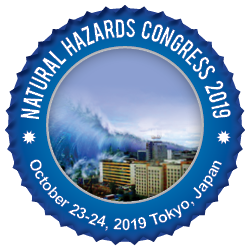Gliceto Olarte Dagondon
GREEN Mindanao Association, Philippines
Title: Challenges to crowd-sharing in providing early warning and enhancing multi-stakeholders advisories in disaster risked communities
Biography
Biography: Gliceto Olarte Dagondon
Abstract
Engagement with local communities and governments on conservation, land rights and coastal management past three decades encountered incessant El Nino/La Nina, flooding and droughts impinging sustainability goals. Common projects are situated in coastal areas and mountain regions facing Pacific. The anticipatory planning’s and investigating “REINA” disaster with over 6 thousand casualties in 2004 and preparing for recurrence. Peers in NGO’s, government and communities popularized practical DRR learning experiences and forecasting. Series of mega disasters ensued with over 10 thousand casualties from typhoons Washi-Bopha-Haiyan. Weather warning system, forecasting and climate prediction of government, academic and international agencies was revolutionized by civil society, India players and social media communities. A record million people been evacuated; however, casualties remained high including recent events. Forecasting and prediction remained handicapped and compromised by business as usual pursuits, consideration to economic interest and complexities in DRRM protocols and accountabilities. Intelligence deficient forecasting and predicting resulted into inaccurate advisory common with “Habagat” southwest monsoon and tropical depressions. Lack of climate and weather instrumentation in South China Sea provides opportunity to match western Pacific global system. Migration of warning system from simple 1 to 5 typhoon signal-scale into descriptive categories not well understood and embraced. Upgrading and downgrading of storm categories been taken for granted, not situated on real-time and real-location and lacking local information and participation. Common errors after successive heavy rainfall days, accumulated precipitation were not factored into forecasting and predicting flooding and landslide incidents

